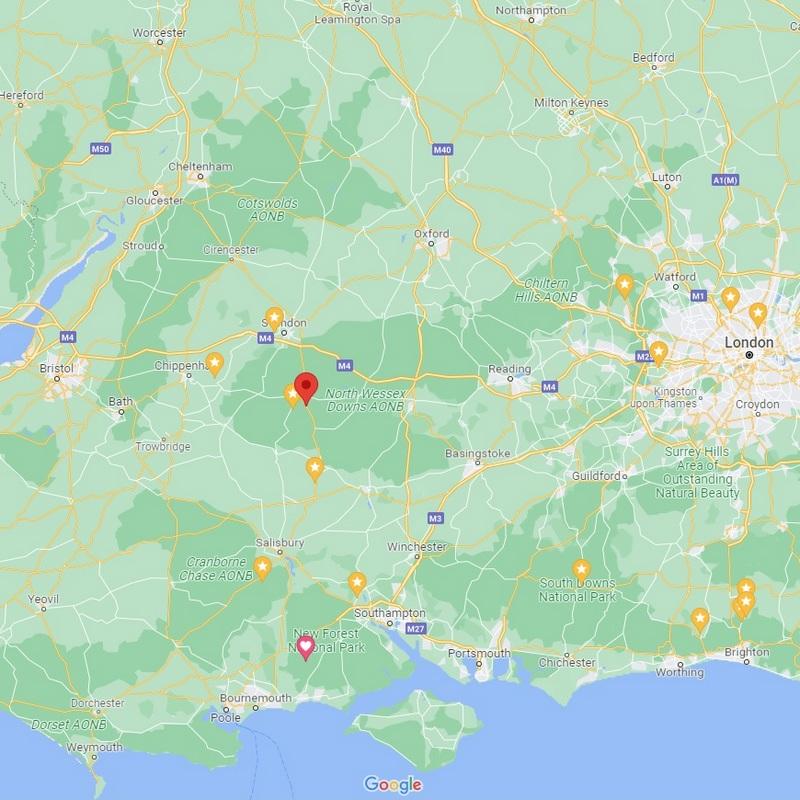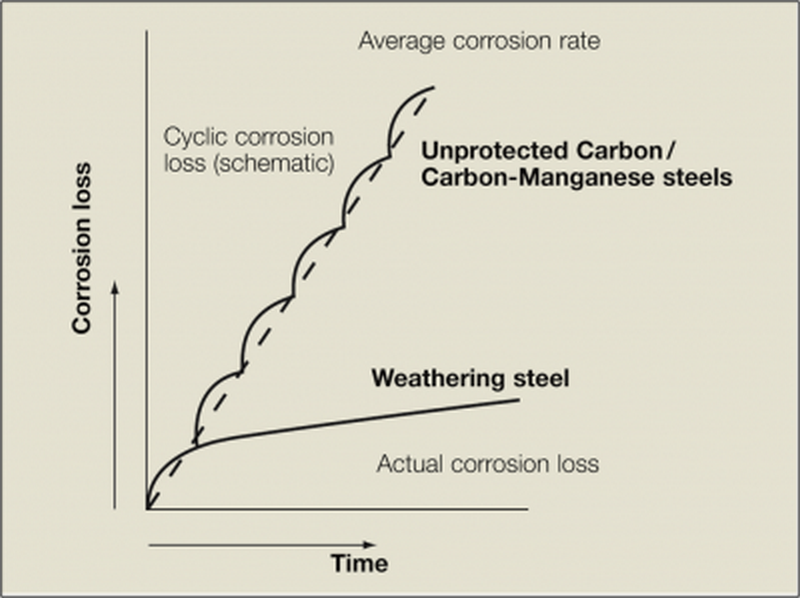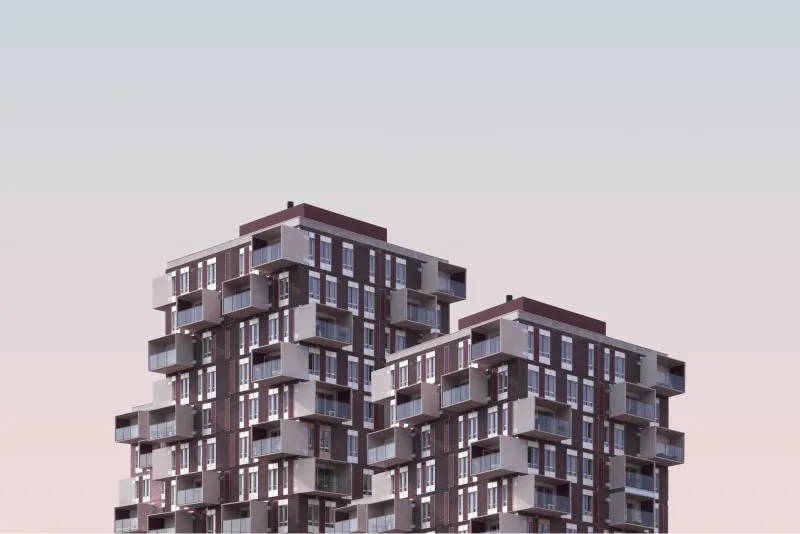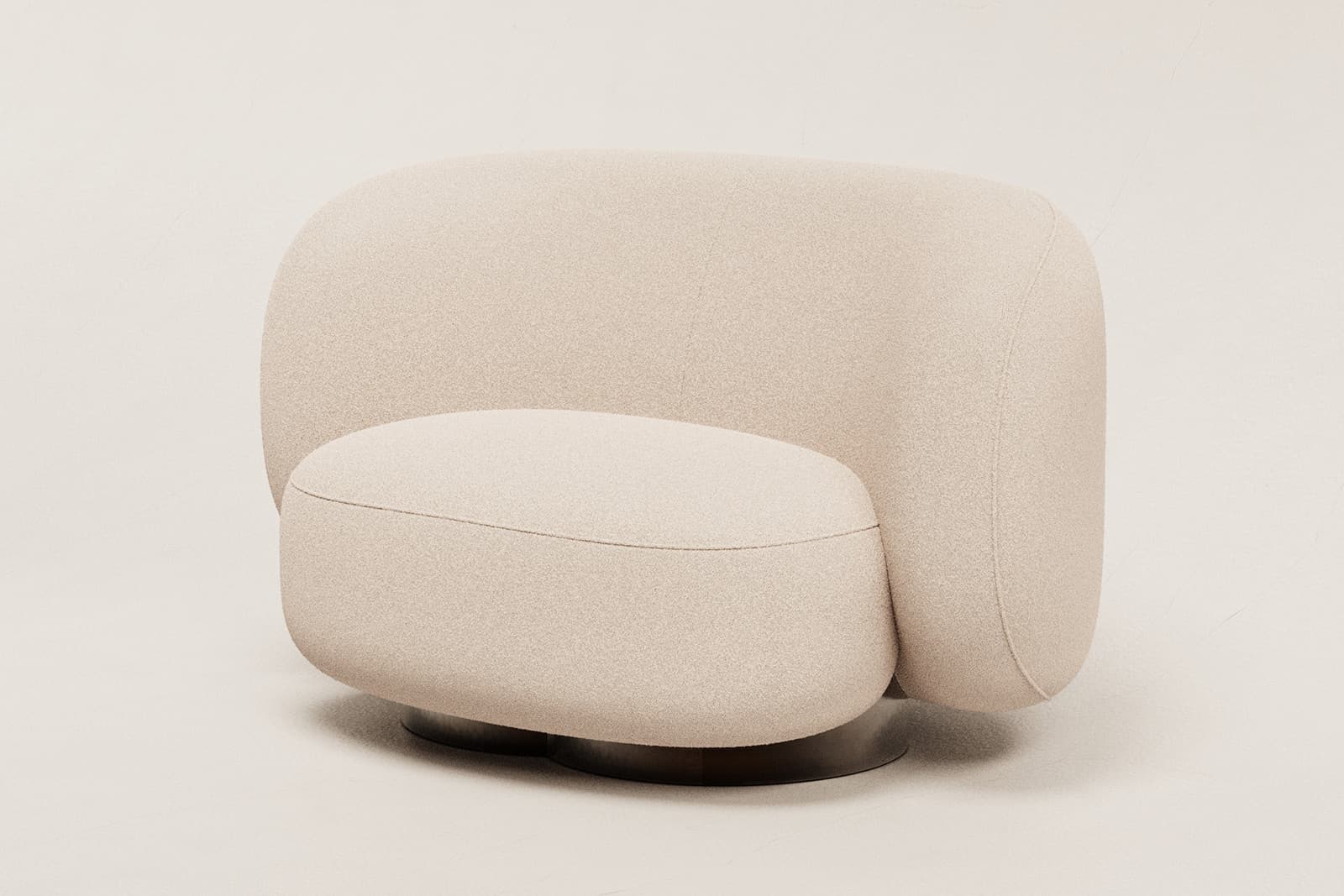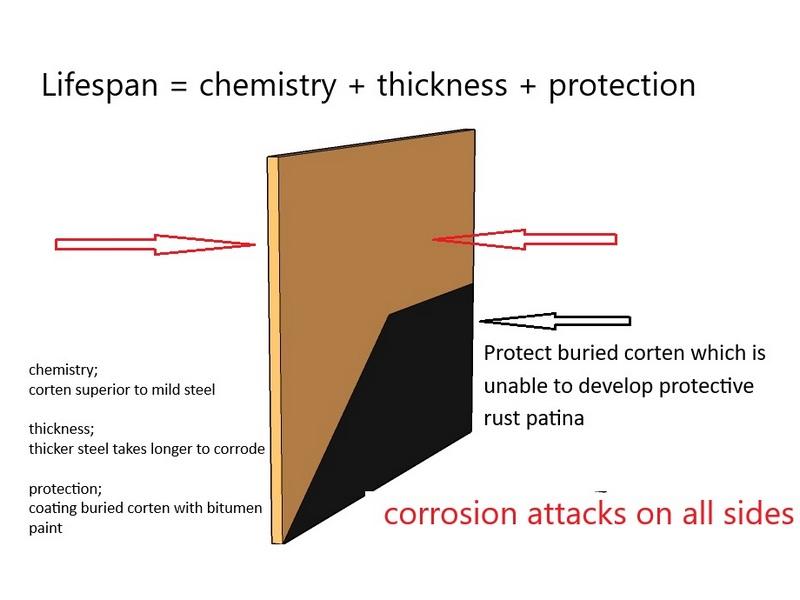CORTEN LIFE SPAN INFORMATION
Life Span
Corten steel, also known as weathering steel, is a high tensile steel that forms a protective layer of rust or patina when exposed to the elements. This patina shields the steel from further corrosion, giving it a characteristic reddish-brown color.
To form this protective patina, corten steel needs repeated cycles of wetting and drying. If buried or otherwise prevented from experiencing these cycles, corten steel will not develop the patina and will rust at a similar rate to mild steel.
Great stories have a personality. Consider telling a great story that provides personality. Writing a story with personality for potential clients will assist with making a relationship connection. This shows up in small quirks like word choices or phrases. Write from your point of view, not from someone else's experience.
Great stories are for everyone even when only written for just one person. If you try to write with a wide, general audience in mind, your story will sound fake and lack emotion. No one will be interested. Write for one person. If it’s genuine for the one, it’s genuine for the rest.
To extend the lifespan of corten steel, ensure all retaining walls have adequate drainage to prevent hydrostatic pressure buildup. Poorly drained retaining walls with saturated soils will shorten the lifespan of unprotected corten steel.
For this reason, it is recommended sealing the insides of planters and the backs of retaining walls made of corten steel with a bitumen sealer.
By following these simple care and maintenance tips, you can ensure that your corten steel structures will last for many years to come.
Weathering steel alloys, are often refereed to as Corten,
Corten steel, was a steel alloy that was first developed in 1933 by the US steel Corporation.
Weathering steel ASTM A606-4 often sold as Corten, develops a protective oxide film, when exposed to repeated wet-dry cycles.
Unlike raw steel, Cor-Ten steel is corrosion resistant due to its alloy composition, it does not show bubbling, flaking or peeling which normally occurs with raw steel
This oxide bonds with the base metal and continues to corrode over time at a much much slower rate.
The inherent nature of the rusting process, is that variations in colour, hue and texture should be expected, these variations are not considered flaws or defects Cor-Ten steel is sold un-weathered (grey/blue steel) and will produce a rust run-off which will may stain stone, concrete, and decking surfaces if not allowed to weather first. To limit staining to surrounding surfaces, place your planter in grass or soil during the initial weathering period.
Nominal thickness for each 10yr period of working life
Location
First 10yr period mm
Subsequent 10yrs mm
Rural
0.10
0.05
Urban*
0.20
0.05
Industrial**
0.20
0.10
* With the chief impurity in the air being sulphur dioxide ** In addition to sulphur dioxide the air also contains chlorine. Also for locations in the immediate vicinity of salt water
Increased thickness = increased life span
Adding 1mm to the exposed face of corten steel adds approx 100yrs to life span
The life expectancy of weathering steel depends on the following
In this section, you can find information about the life span of steel.
1/ the environment
Weathering steel is influenced by environmental factors.
2/ the steel has repeated wet/dry cycles
The formation of a protective oxide coating is key.
3/ the thickness of the steel specified
The steel's initial thickness affects its longevity.
For example
Here's an instance of corrosion over time.
How is service life calculated?
Life span predictions involve many environmental and other conditions.
What about sealing steel?
Sealing raw steel protects from corrosion in some cases.
Q355NH Weathering steel
Chemical composition(%)
C:≤0.16 Si≤0.5 Mn:0.5-1.5 P≤0.03 Cr:0.4-0.8 Cu:0.25-0.55
Mechanical property
Yield strength/Mpa:≥355 Tensile strength/Mpa:490-630 Elongation/%≥22
Stainless Steel TEK screws should be used to fasten the corten weathering steel. Do not use zinc coated screws as this will result in bimetallic corrosion which occurs when dissimilar metals are in contact
The zinc anode will quickly corrode when an electrolyte (water) is present
Corten is not permitted to fix directly to galvanised steel, electrolytic isolation pads must be fitted to prevent any direct contact
Zinc flashings should not be in direct contact with corten, to avoid dissimilar metallic corrosion due to the large surface area of zinc in contact with the corten . A solution can be to install a non conductive permanent insulation layer between the two dissimilar metals
Corten steel weathers over time
Image of pitted, blistering, flakey mild steel
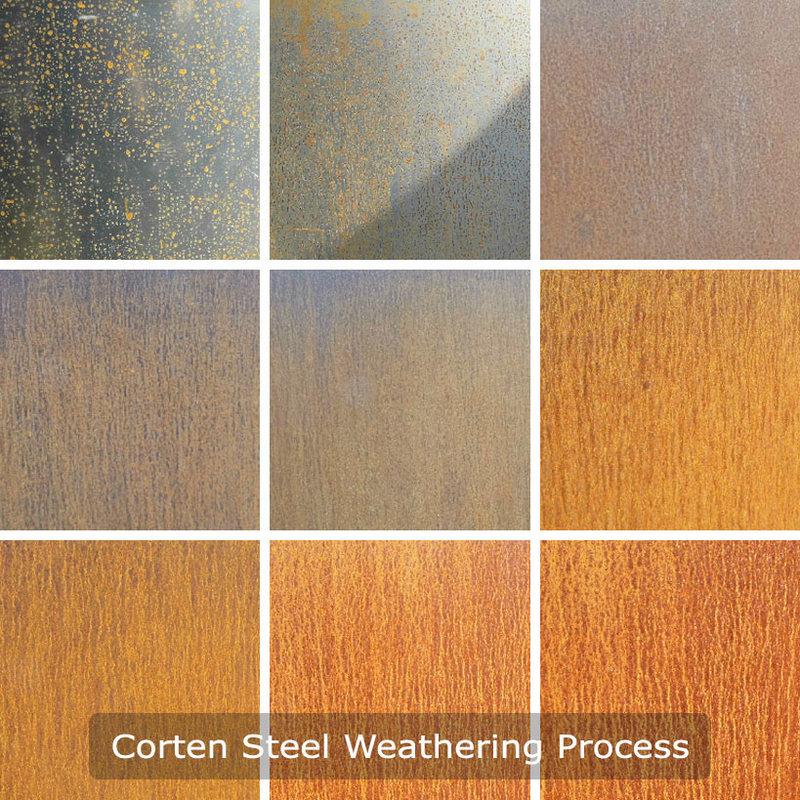
Genuine corten steel
Genuine corten steel does not flake or blister
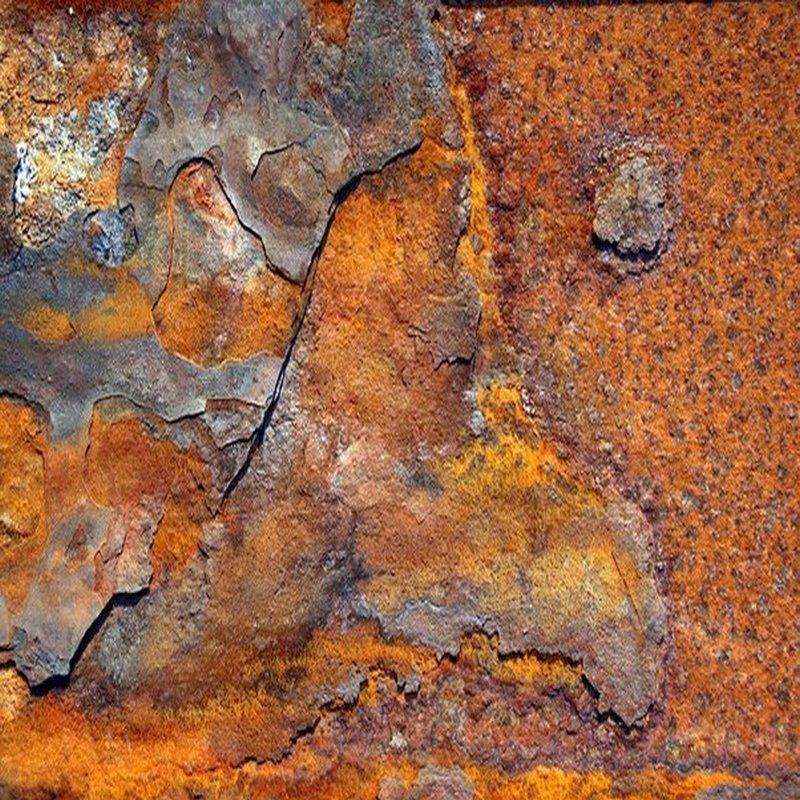
Mild steel corrodes
Mild steel corrodes quickly with flakes
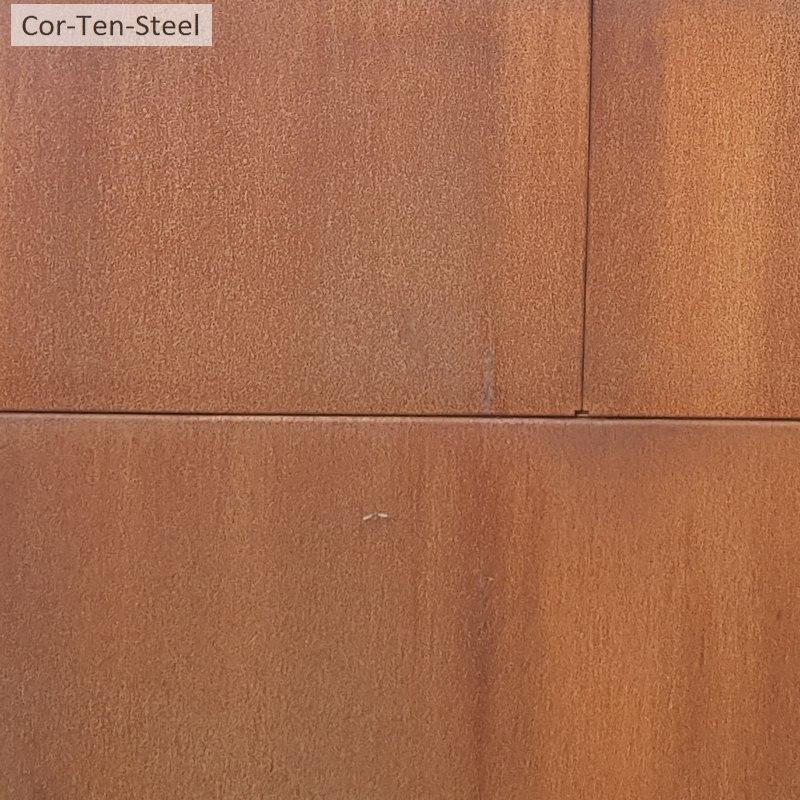
Corten Protective Rust
Corten steel develops a fine rust patina
CORTEN SYEEL DESIGNS
Cor-ten-steel.co.uk
Cadley
Marlborough UK
